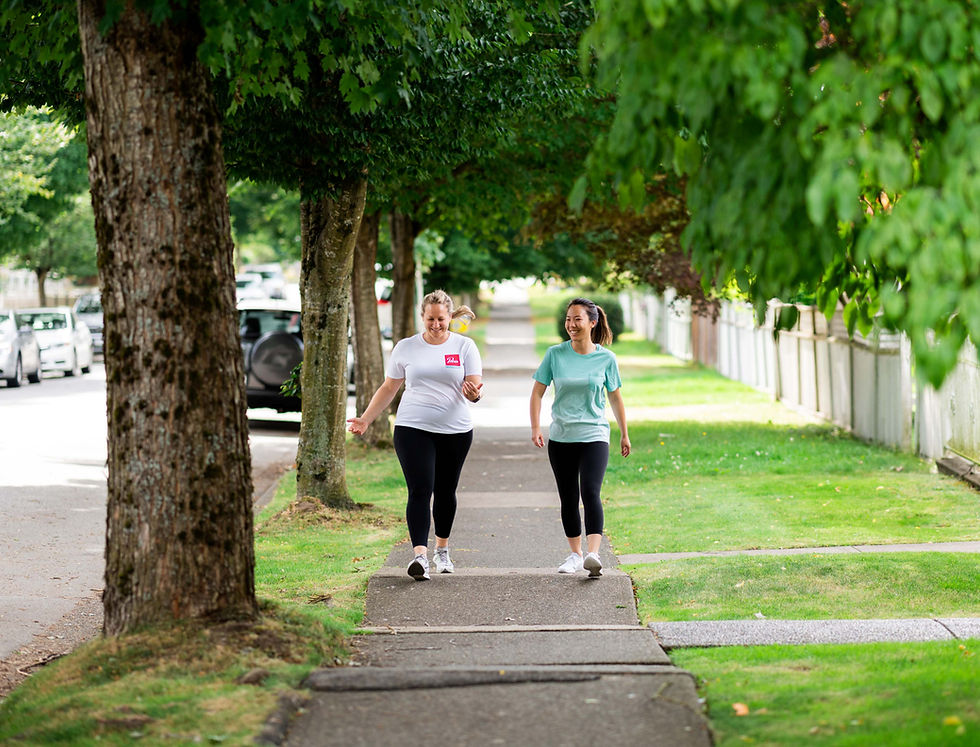3 THINGS YOU CAN DO TO HELP HEAL YOUR PLANTAR FASCIITIS
- Paris everyBODY Team

- May 5
- 2 min read
Waking up with a sharp, stabbing pain in your heel when you get out of bed? That's one of the classic signs of plantar fasciitis.
"Plantar" refers to the bottom of your foot, and "fascia" is the thick band of connective tissue that runs from your heel to the base of your toes. It supports your arch and helps absorb the impact of daily movement. The suffix "-itis" means inflammation—so plantar fasciitis is the irritation or inflammation of this band of tissue, most often felt at the heel where it attaches to your heel bone.
Your healthcare professional should determine the root cause of why you developed plantar fasciitis. They will conduct a thorough examination, which may include a physical assessment, imaging tests, and a review of your medical history, to provide an accurate diagnosis and recommend the most effective treatment plan.
Here's our 3 S's strategy to recover from plantar fasciitis! These should help ease your discomfort, speed up healing, and prevent plantar fasciitis from coming back.
Stretching
Tight calves and weak foot muscles can place extra stress on your plantar fascia. Gentle stretching can reduce that tension and improve mobility.
Helpful tools and exercises:
Foam roller (calves): With your heel on the ground, rest your foot against the foam roller. Hold for 30 seconds and repeat 2–3 times per leg.
Massage ball (arch): Roll a Paris massage ball under your arch for a few minutes to help release tension and stimulate blood flow.
Plantar fasciitis night splint: A night splint gently flexes your foot while you sleep, preventing the plantar fascia from tightening overnight. This helps reduce that painful first step in the morning.
Support
One of the most significant contributing factors to plantar fasciitis is poor foot mechanics—combined with overuse, age, or lack of support. With every step, your arch slightly flattens and rebounds, pulling on the fascia where it connects to the heel. Proper arch support can help reduce this repetitive strain.
Support tools that can make a difference:
Custom orthotics: Orthotics can help support your feet, addressing your unique biomechanics so you can walk comfortably again.
Supportive footwear: Swap out flat flip-flops and unsupportive shoes for options with a firm sole and proper arch support. Check out our guide to footwear here.
Soothe
You don't need to stop moving altogether, but you should listen to your body. That means reducing your activity level to allow your body to repair the microtears in your fascia and allow it to heal.
Recovery strategies to soothe your symptoms:
Cold therapy: Apply ice or a cold pack under your foot for 15–20 minutes to help reduce inflammation and pain.
Low-impact activities: Take a break from high-impact workouts, like running, to gentler activities like walking or yoga.
Remember, while these tips can be beneficial, recovering from plantar fasciitis isn't a quick fix. Getting back to what you love doing can take a few weeks or even months but we're here to help you recover faster!
Visit one of our locations today and chat with one of our Movement Specialists for personalized product recommendations! Or book a virtual consultation with one of our Canadian Certified Pedorthists to see if custom orthotics are right for you!
*Always consult with a healthcare professional for personalized advice and treatment.






Comments